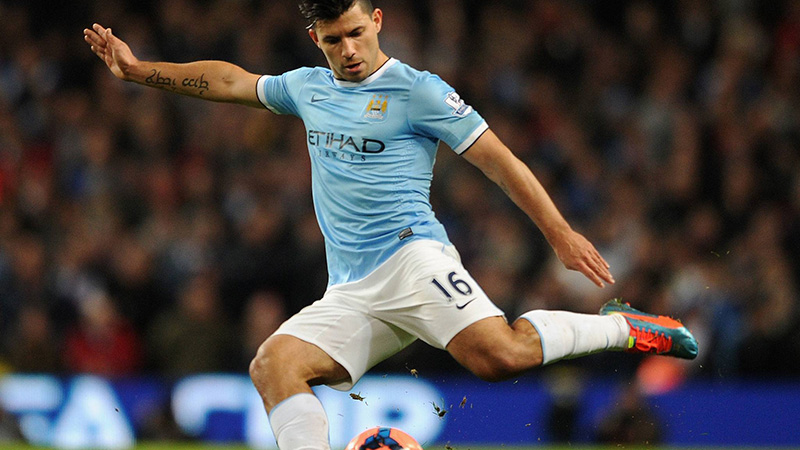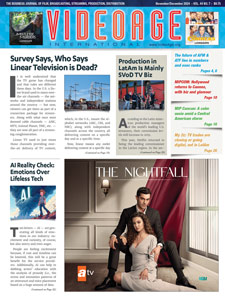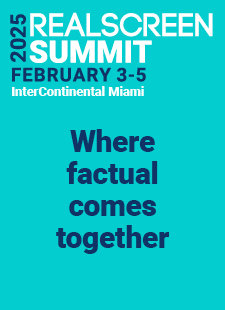Football (or soccer, as it’s called in North America) is famous for being one of the least efficient sectors of the sports/ entertainment industry. Recent investment, however, has led to small steps being taken toward the “corporatization” of the sport, so that now the picture is much different from the one painted by the 2009 book Soccernomics — co-written by economist Stefan Szymanski and sportswriter Simon Kuper — the story of a sport managed via preconceived absolutes, which only implemented changes through trial-and-error.
Why is football so inefficient? In part because shareholder oversight of management is a rare exception in the sport. Unsurprisingly, the two most successful clubs in Spain, Real Madrid CF and FC Barcelona (respectively the second and third most valuable sports franchises in the world, according to Forbes’ most recent ranking), are clubs whose fans can register as members and fundamentally have the same oversight rights as shareholders.
German clubs have strict restrictions on buying majority ownership, and it was through good management that Bavarian giant Bayern Munchen has been able to create a sustainable sports business model dating back to the 1970s.
There were a few early adopters of the concept of a football team as a business, rather than a sort of tribal pastime. Notable examples include English powerhouse Manchester United. “Man United” was listed on the London Stock Exchange in 1991, until a takeover and de-listing by Malcolm Glazer in 2005.
Although under Glazer’s ownership Manchester United was able to secure lucrative sponsorship and TV rights deals, the club’s growth was not enough to outpace the debt it had taken on. Even though results in the English Premier League suffered, a re-listing on the New York Stock Exchange in 2014 saw the club valued as the most valuable sports franchise in the world.
In the early years of this decade a trend — also predicted by Kuper and Szymanski — changed the face of football: the attraction of investment to European clubs. London was first to attract investment, with Chelsea FC, a club historically in the shadow of nearby Tottenham FC and Arsenal FC, earning the financial backing of Russian billionaire Roman Abramovich in 2003, and winning the English Premier League for the first time (since 1955) the following year.
Chelsea went on to become a powerhouse in European football, and finally won the Champions League trophy in 2013. This was an anomaly for English football: apart from occasional prominent displays from the North London club Arsenal, English football was traditionally dominated by clubs from the industrial Northwest (principally Liverpool and Manchester, incidentally both now owned by U.S. sports groups) as well as the Midlands
(teams from Birmingham, Nottingham, Sheffield and Leeds, historically stand out). Arsenal soon followed, and since 2011 has been co-owned by Russian billionaire Alisher Usmanov and U.S. holding company Kroenke Sports Enterprises.
Paris and Rome followed London’s example, with the Qatari sovereign wealth fund and Fenway Sports Group respectively investing in Paris Saint-Germain FC and AS Roma. In the past few years, a third wave of investment in football clubs has been taking place, mostly coming from Asia. Asia has always been a lucrative market for football broadcasting rights, and it comes as no surprise that the largest sports TV rights group, MP & Silva, was headquartered in Singapore.
Initially founded by three Italian entrepreneurs with the intent of distributing Italian football rights, MP & Silva opened an office in Singapore in 2007 and began focusing on the distribution of European football rights in Asia.
MP & Silva’s greatest windfall was a deal to distribute the popular English Premier League in 51 territories in 2013, prior to that the group negotiated the broadcast of Italian Serie A rights by Chinese state television, the first such deal to take place.
The company has since rapidly branched out into the distribution of other sports, including tennis and motorsport, moving its headquarters from Singapore to London, and in May of this year secured an investment valued at 65 percent of equity from two Chinese groups, Everbright Securities and Baofeng Technology.
Although the figure remains undisclosed, a statement put out by Everbright Securities affirms that the valuation of MP & Silva stands at over U.S.$1 billion, placing the joint investment at over $650 million.
The billion-plus dollar valuation of MP & Silva follows an even greater valuation given to Infront Sports Media, a Swiss-based rights distributor, which has, among other sporting events, the FIFA World Cup in its portfolio. Interest in football ownership from China-based investors doesn’t stop at the club level, but extends well into international rights: in February of 2015 the Dalian, China-based Wanda Group, a company involved in real estate development, movie theaters, and hotels, purchased a 68 percent stake in Infront Sports Media for $1.2 billion.
With such a large interest in football from Asian markets, it comes as no surprise that investors aren’t just interested in securing broadcast rights, but running football itself. In 2013, Italy’s Internazionale Milano Football Club (commonly called Inter) was purchased by Indonesian media mogul Erick Thohir, who is principally active in newspaper ownership and multiple local TV and radio stations.
This year, Chinese appliance manufacturer and retailer Suning Group purchased a 68.5 percent stake in Inter from Thohir, valued at about 130 million euro (in addition to other investments in the club not tied to equity).
The Suning Group was in good company: Last May, Chinese sports marketing mogul Lizhang Jiang purchased the Spanish club Grenada FC.
In June, Wolverhampton Wanderers, a smaller English Premier League team, was purchased by Chinese holding company Fosun International. Aston Villa FC, a historic English football cub from Birmingham, was bought out by Recon Group, a diversified holding company in which Chinese entrepreneur Jiantong Xia invested in 2004 after selling the planning and design company he started.
Also in June, 80 percent of French club OGC Nice was purchased by a group of investors formed by Chinese hotel magnate Alex Zheng, Chinese-American Private Equity Manager Chien Lee, Pacific Media Group, a Beijing-based media right distributor headed by American Paul Conoway, and Elliot Hayes, a New York-based financial services entrepreneur.
An interesting trend that seems to unify Chinese buyers is their affinity for clubs traditionally tied to the European industrial heartland, which as recently as a decade ago dominated Europe’s most elite international football competition, the Champions League
Some clubs from Europe’s old manufacturing hubs, notably Manchester United and Liverpool, bucked the trend and were bought out by large sports conglomerates. However, many other clubs held out, only to find themselves left behind as — like in all developed economies — manufacturing evaporated.
Medium-sized clubs in Southern Spain, the French Rhone Valley, and the English Midlands were especially hard hit. Unsurprisingly, buyers in recent years focused on clubs that had fallen from the top divisions of European football, and include Chinese toymaker Rastar Group (buying a majority stake in Barcelona-based club RCD Espanyol in 2015), Thai canned tuna billionaire Djephon Chansiri (buying English club Sheffield Wednesday in January of the same year), auto manufacturer Peugeot’s sale of French FC Sochaux to a Hong Kong-based lighting technology company called Ledus in 2014, and the 2013 purchase of Dutch club ADO Den Haag by Chinese sports event planner United Vansen.
As early as 2012, the Kuwaiti Al-Hasawi family purchased second-tier English club Nottingham Forest, while in 2011 Malaysian entrepreneur Tony Fernandes purchased a majority stake in Queen’s Park Rangers, one of the oldest clubs in England, also in the second tier. Even Reading Football Club, founded in 1871 (but not turned professional until 1920), which had only debuted in the top tier in 2006, was entirely purchased by three Thai businessmen.
Large successful clubs with solid financial backing, like Atletico Madrid (majority-owned by the [Jesus] Gil family, active in real estate) and Manchester City (owned by the Emirati Sheikh Mansour), have also attracted minority investments from China-based owners.
Curiously, Italian football has been one of the few holdouts. AS Roma, Bologna Calcio (owned by Canadian food industry entrepreneur Joe Saputo) and Inter are the only top-tier clubs owned by non-Italians. Last August, Inter’s crosstown rivals, AC Milan, signed a preliminary agreement to sell the club to the GSR Group, a Chinese financial services group. The AC Milan sale, which has not yet been finalized, occurred after a series of meetings with a revolving door of possible Asia-based investors.
Italian football was traditionally dominated by Inter, AC Milan, and Turin-based Juventus. With Juventus traded on the Italian stock exchange and Inter now owned by a group of Asia-based investors, AC Milan was the last of Italy’s historic football giants to have a single Italian owner: Television mogul and former politician Silvio Berlusconi.
Times have not been easy in the rapidly changing football landscape, in the last decade AC Milan, though sustained by the Milanese business community, has been outpaced by more globalized clubs. It is unsurprising that in 1995, AC Milan took in the equivalent of 250 million euro in revenue, while Real Madrid took 200 million euro. Today, Real Madrid takes in half a billion euro in revenue, while AC Milan is still stuck at 250 million. Berlusconi, whose media empire is limited to Italy and Spain, cannot inject enough cash into the club to keep it up to pace with clubs that, either by collecting investment or by creating a global brand, have cash inflows from all over the world
by Yuri Serafini
Audio Version (a DV Works service)












Leave A Comment